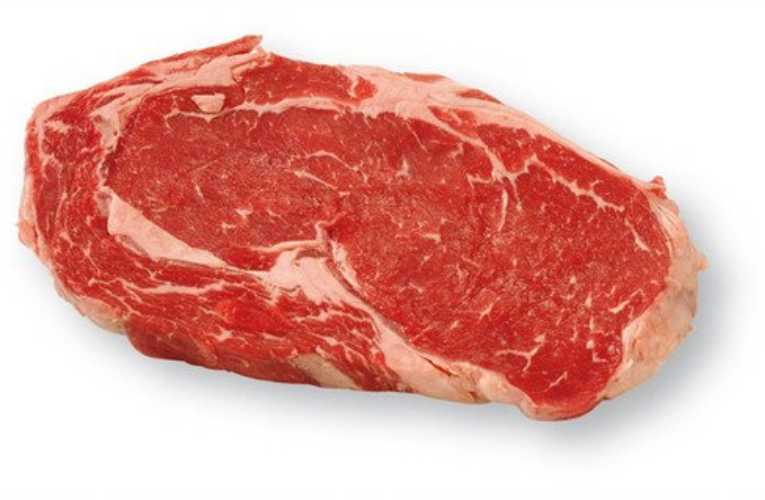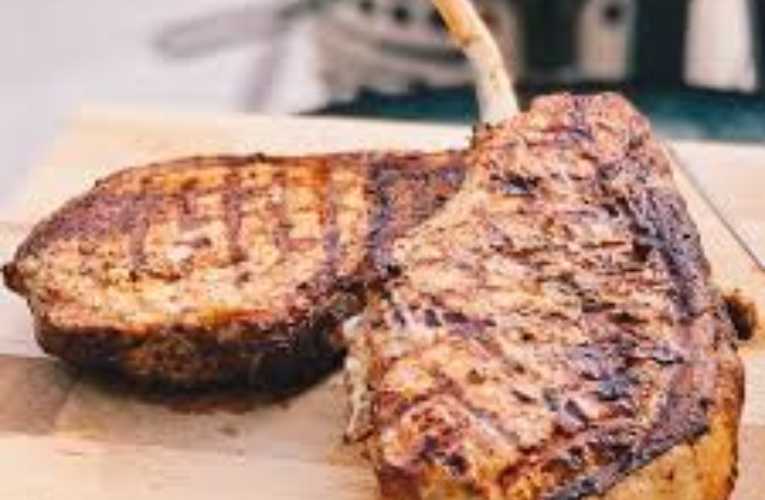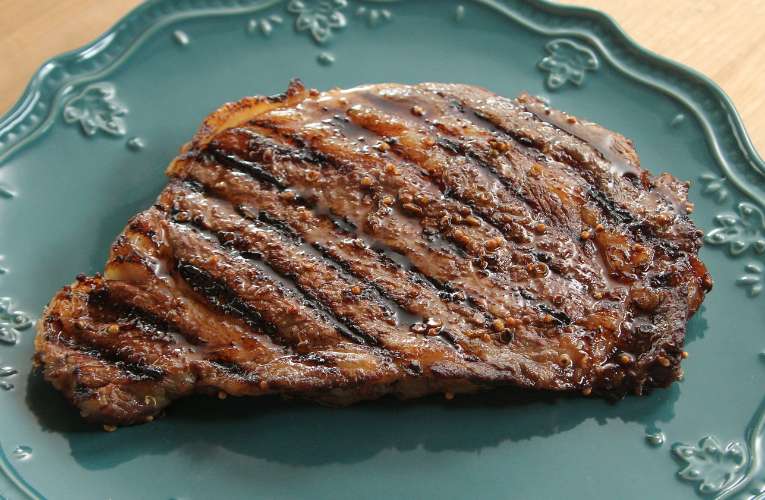Although the exact origin of steak is uncertain, it is believed that our ancient ancestors discovered the deliciousness of cooked meat. The process of grilling meat over an open fire has been practiced by various cultures throughout history, with each adding their unique techniques and flavors.
Today, steak has become a culinary delight enjoyed in many forms, from tenderloin to ribeye, and is often associated with high-quality dining experiences and indulgence.

Exploring the History of Steak: From Ancient Times to Modern Cuisine
Steak, a beloved dish enjoyed by many around the world, has a rich history that dates back centuries. From its humble beginnings in ancient times to its transformation into a culinary delicacy in modern cuisine, steak has evolved and become a staple in various cultures.
In this section, we will delve into the fascinating journey of steak, tracing its origins and development throughout history.
The Early Origins
The concept of steak can be traced back to ancient civilizations, where early humans discovered that meat could be cooked over an open flame. This discovery revolutionized the way food was prepared and consumed.
In ancient times, steak was not the tender, juicy dish we know today; instead, it was a practical way to utilize and preserve the meat.
Ancient civilizations, such as the Greeks and Romans, developed various methods of cooking meat, including grilling and roasting. The concept of “steak” as we know it began to emerge during this period, with the meat being cut into thinner, more manageable slices.
However, it was still a far cry from the tender, flavorful steak we enjoy today.
The Rise of Modern Steak
As societies advanced and culinary techniques improved, steak underwent a transformation. It gradually became a symbol of wealth and prestige, reserved for the upper classes.
During the medieval period, the concept of aging meat was introduced, which significantly enhanced its flavor and tenderness. Aging allowed enzymes to break down the muscle fibers, resulting in a more tender and flavorful steak.
Steak also found its way into the New World during the Age of Exploration. European settlers brought their culinary traditions with them, including their love for meat.
The vast grasslands of North and South America provided the perfect conditions for raising cattle, leading to the establishment of ranching and the production of high-quality beef.
The Steak Revolution
The 19th and 20th centuries witnessed a steak revolution, marked by advancements in meat processing and cooking techniques. Industrialization led to the mass production and distribution of meat, making steak more accessible to the general population.
Additionally, the introduction of new cooking methods, such as broiling and pan-searing, allowed for the perfect preparation of steak.
During this period, various cuts of steak gained popularity, each offering a unique texture and flavor. The filet mignon, ribeye, T-bone, and sirloin became household names, coveted for their tenderness and marbling. Steak became a symbol of celebration, often enjoyed during special occasions and gatherings.
Modern Steak Culture
Today, steak has solidified its place in culinary culture worldwide. From classic steak houses to modern fusion restaurants, the love for steak knows no bounds.
The appreciation for different cooking methods, seasoning techniques, and cuts of steak continues to evolve, allowing for a diverse range of flavors and experiences.
Furthermore, the importance of sourcing high-quality meat has become paramount in modern steak culture.
Consumers are increasingly conscious of the ethical treatment of animals and the environmental impact of meat production. As a result, there has been a rise in demand for grass-fed, organic, and locally sourced beef.

Unraveling the Mystery: Who Invented the Perfectly Grilled Steak?
Grilling a steak to perfection is an art that has been perfected over centuries. The combination of tender, juicy meat with the smoky char of the grill is a culinary delight that has tantalized taste buds for generations.
But have you ever wondered who invented the perfectly grilled steak? Let’s delve into the history of grilling and try to unravel this delicious mystery.
The Origins of Grilling
Grilling as a cooking technique can be traced back to primitive times when our ancestors discovered fire. The process of grilling meat over an open flame not only made it more palatable but also effectively eliminated harmful bacteria. This allowed early humans to consume meat more safely and efficiently.
However, the exact origins of grilling are difficult to pinpoint. As it is a fundamental cooking method, it is believed to have been practiced independently by various ancient civilizations across the globe.
From ancient Greece to China, different cultures developed their own unique grilling methods and infused their own flavors into their grilled dishes.
The Evolution of Grilled Steak
While the concept of grilling has been around for centuries, the focus on grilling steak specifically is a more recent development. Grilled steak, as we know it today, is the result of centuries of experimentation, refinement, and the pursuit of culinary perfection.
One of the key factors in the evolution of grilled steak was the discovery and utilization of different cuts of meat. As people became more adept at butchering animals, they discovered that certain cuts of meat were more suitable for grilling.
The tenderloin, ribeye, and porterhouse cuts, for example, became popular choices for grilling due to their tenderness and marbling.
Another crucial development was the invention of the grill itself. The advent of metalworking allowed for the creation of grills that could be easily controlled and adjusted. This enabled cooks to achieve the desired level of doneness and impart the characteristic smoky flavor to the meat.
The Role of Cultural Influences
As grilling techniques spread across different regions, they were influenced by the local culture, ingredients, and cooking traditions. Each culture added its own unique twist to grilled steak, resulting in a diverse array of flavors and preparations.
For example, in Argentina, the tradition of grilling steak, known as “asado,” is deeply ingrained in the culture. Argentineans prefer their steak cooked over an open flame using a simple salt and pepper seasoning. The focus is on the quality of the meat itself, allowing the natural flavors to shine through.
In contrast, in the United States, the advent of barbecue culture introduced new techniques such as marinating, basting, and applying different types of sauces to grilled steak. Regional variations, such as Texas-style barbecue or Kansas City-style barbecue, further enriched the American grilling landscape.
The Perfectly Grilled Steak: A Collective Creation
While it is difficult to attribute the invention of the perfectly grilled steak to a single individual, it is clear that it is the result of centuries of culinary exploration and cultural influences.
The perfect grilled steak is a collective creation, shaped by the ingenuity and creativity of countless cooks throughout history.
Today, grilling a steak to perfection has become a cherished skill and a source of pride for many. Whether you prefer a classic salt and pepper seasoning or enjoy experimenting with marinades and rubs, the art of grilling steak continues to evolve and delight food enthusiasts worldwide.

Steak Evolution: How Different Cultures Have Contributed to its Creation
Steak, a succulent and flavorful cut of meat, has become a staple in many cuisines around the world. While it is often associated with Western cuisine, the evolution of steak as we know it today has been influenced by various cultures throughout history.
In this section, we will explore how different cultures have contributed to the creation and development of steak.
1. Ancient Origins
Steak has its roots in ancient cooking techniques, with evidence of grilled and roasted meats dating back thousands of years. Cultures such as the ancient Egyptians, Greeks, and Romans are known to have enjoyed variations of steak-like dishes.
For example, the ancient Egyptians developed a method of cooking meat over open fires, which is similar to grilling as we know it today.
They would marinate the meat in various herbs and spices to enhance its flavor. This early form of grilling laid the foundation for the modern steak cooking techniques.
2. European Influence
Europe played a significant role in the evolution of steak, particularly during the medieval period. During this time, the concept of steak began to take shape with the introduction of beef as a luxury meat.
One notable influence was the British tradition of roasting beef, which eventually led to the popular dish known as roast beef. The British perfected the art of roasting large cuts of beef, resulting in tender and flavorful meat.
As European settlers migrated to other parts of the world, they brought their techniques and recipes for steak with them.
3. American Influence
In the United States, steak has become intertwined with the country’s culinary identity. The evolution of steak in America can be attributed to several factors, including the abundance of cattle ranches, the influence of Native American cooking techniques, and the rise of the modern steakhouse.
The Native American tribes of the Great Plains had long practiced the method of drying and smoking meat, which eventually influenced the development of techniques such as jerky and smoking. These methods allowed for the preservation of meat and the creation of flavorful steak cuts.
Additionally, the development of cattle ranching in the American West led to the availability of high-quality beef cuts, making steak more accessible to the general population.
The rise of the modern steakhouse culture in the late 19th and early 20th centuries further popularized steak as a symbol of indulgence and luxury.
4. Asian Influence
While steak is often associated with Western cuisines, Asian cultures have also made significant contributions to its evolution. In Japan, for example, the art of teppanyaki grilling has gained popularity, showcasing the tenderness and flavor of various steak cuts.
Korean cuisine features a unique style of grilling called bulgogi, where thin slices of beef are marinated in a soy-based sauce and grilled to perfection. This method highlights the natural flavors of the meat and has become a popular choice for steak lovers.
5. Fusion of Flavors
With the globalization of cuisine, chefs and home cooks alike have embraced the fusion of different cultural flavors to create unique steak dishes.
This blending of culinary traditions has resulted in mouthwatering combinations, such as Mexican-inspired carne asada, Thai-style beef satay, and Argentinean-style chimichurri steak.
These fusion dishes not only showcase the versatility of steak but also celebrate the diverse influences that have shaped its evolution. They highlight the rich history and cultural exchange behind the creation of steak as a global culinary phenomenon.
The Perfect Cut: Traditional and Innovations in Steak Preparation
When it comes to preparing steak, there are countless techniques and methods that have been developed over the years.
From traditional cooking methods passed down through generations to innovative and modern approaches, chefs and home cooks alike continue to explore new ways to achieve the perfect cut of steak.
In this section, we will delve into the traditional and innovative methods of steak preparation, highlighting their unique characteristics and benefits.
1. Traditional Methods
Traditional methods of steak preparation have stood the test of time and are revered for their simplicity and ability to enhance the natural flavors of the meat. These methods focus on preserving the integrity of the steak while delivering a tender and juicy result.
A. Dry Aging
Dry aging is a traditional method that involves hanging the beef carcass in a climate-controlled environment for an extended period, typically ranging from weeks to months. This process allows natural enzymes to break down muscle fibers, resulting in a more tender and flavorful steak.
Dry-aged steaks are known for their intense beefy flavor, pronounced marbling, and a unique nutty and earthy taste. The process also concentrates the flavors, resulting in a more robust and complex eating experience.
B. Sous Vide
Sous vide, meaning “under vacuum” in French, is a cooking technique that has gained popularity in recent years. It involves vacuum-sealing the steak in a bag and cooking it in a precisely controlled water bath at a lower temperature for an extended period.
This method allows the steak to cook evenly and retain its moisture, resulting in a tender and juicy texture. Sous vide also allows for precise control over the level of doneness, ensuring consistent results every time.
2. Innovative Methods
As culinary techniques continue to evolve, chefs and food enthusiasts have pushed the boundaries of steak preparation, exploring new methods to achieve unique textures, flavors, and presentations.
A. Reverse Searing
Reverse searing is an innovative method that involves slow-cooking the steak at a low temperature in an oven or grill until it reaches the desired internal temperature, followed by a quick sear on high heat to develop a caramelized crust.
This technique allows for precise control over the level of doneness and results in a steak that is evenly cooked from edge to center. The slow cooking process also enhances the tenderness of the meat while the sear adds a flavorful crust.
B. Molecular Gastronomy
Molecular gastronomy is a scientific approach to cooking that utilizes modern techniques and ingredients to create innovative and visually stunning dishes.
In the realm of steak preparation, chefs have explored techniques such as spherification, foam, and sous-vide infusion to achieve unique textures and flavors.
For example, molecular gastronomy may involve creating a steak foam or using liquid nitrogen to flash-freeze the steak, resulting in a visually captivating dish that tantalizes the taste buds.
In summary, steak preparation techniques have evolved over time, encompassing both traditional methods that emphasize simplicity and preservation of flavors, as well as innovative approaches that explore new textures and presentations.
Whether you prefer the tried-and-true methods or are eager to experiment with cutting-edge techniques, the world of steak preparation offers endless possibilities for a truly memorable dining experience.

FAQs
Who invented steak?
Steak, in its essence, is a cut of meat from various animals, such as beef, chicken, or pork. It is a culinary concept that has evolved over time and does not have a specific inventor.
How is steak cooked?
Steak can be cooked in various ways, including grilling, pan-searing, broiling, or sous vide. The most common methods involve seasoning the steak and then cooking it to the desired level of doneness.
What are the different cuts of steak?
There are several cuts of steak, each with its own characteristics and flavors. Some popular cuts include ribeye, sirloin, tenderloin (filet mignon), T-bone, and strip steak. Each cut offers a unique dining experience.
Conclusion
In conclusion, the invention of steak cannot be attributed to a single individual. Steak is a culinary creation that has evolved over time, with various cultures and cuisines contributing to its development.
From ancient methods of curing and preserving meat to the modern techniques of grilling and broiling, steak has become a beloved dish enjoyed by many around the world.
The delectable combination of flavors, textures, and seasonings in steak makes it a timeless favorite and a staple in restaurants and home kitchens. Whether you prefer a juicy ribeye, a tender filet mignon, or a flavorful sirloin, steak offers a satisfying dining experience for meat lovers.
So, next time you savor a mouth-watering steak, remember that its origins stem from a rich culinary history that continues to be celebrated and enjoyed today.

